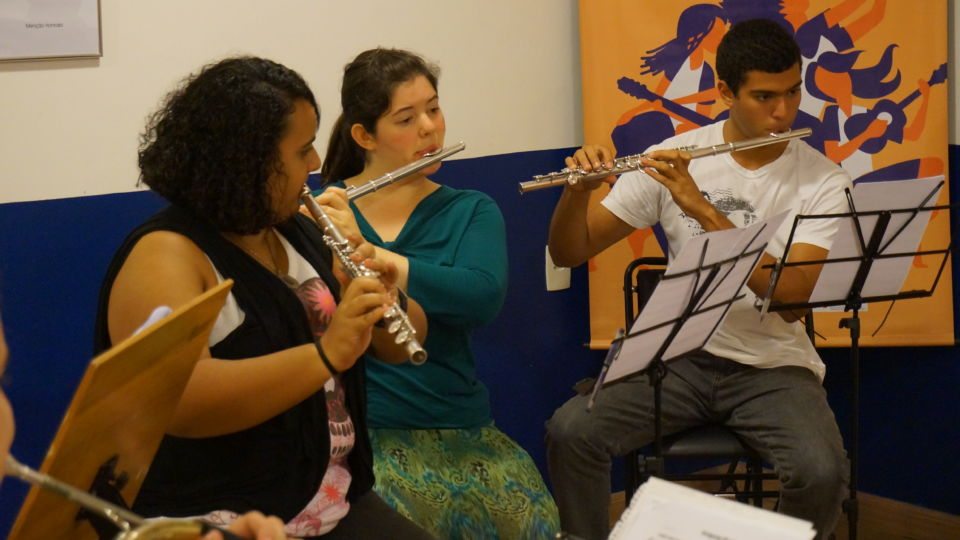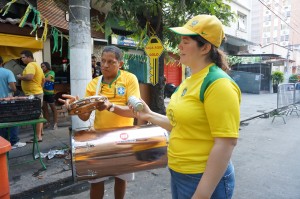Special Series: Music, Culture, and the World Cup in Brazil. Issue 2: Musical Melting Pot
Juliana Baioni is a dual citizen (American and Brazilian) doing a Performing Arts Abroad music internship in Brazil from June 15th to July 13th. During her time in Brazil, she is writing a weekly series for us on the World Cup, music, culture, and the intersection of the three. This is the second post of the series, and be sure to check back next week for the next post!
What is attractive about the music of Brazil is its melting pot characteristics. Brazil is a country with a wide variety of people groups, all with their unique musical traditions and practices. There are the native Indians who had a style of music that Heitor Villa-Lobos, a 20th century Brazilian composer, sought to feature in several of his works for both voice and instruments. Then you have the Europeans (Portuguese, Italian, and German) with their traditional Western classical music, and folk music as well. Descendants of slaves from Africa brought along and carried on many religious and musical traditions. There are other groups in Brazil as well, such as those of Japanese descent, but the three previously mentioned groups play the greatest roles in the formulation of Brazilian music as it is known today. The Indians had an endemic sound, the Europeans brought melodic and harmonic understanding, and the Africans brought what is most recognizable – the rhythm.
Classical Brazilian music, such as works by Villa-Lobos and others, are thick and complex with harmonic and melodic texture, a result of the composers’ training, study and ability to manipulate and morph techniques found in the Western classical music tradition. Popular Brazilian music, however, was much simpler harmonically, essentially using the classic I-IV-ii-V-I, I-ii-V-I, or I-V-I chord progression with minimal harmonic texture. For example, if a piece of music was in C, and used the first progression listed above, we would find that the piece is made mostly of chords C, F, Dmin, and G. It was not until the 1950s that Brazilian popular music began to expand harmonically to match its famed rhythmic complexity. Composers such as Pixinguinha and Antônio Carlos Jobim, the composer of the Girl From Ipanema, were essential in this shift and the genre of Bossa Nova developed as a result of this harmonic exploration.
There are many sub genres of Brazilian popular music – samba, choro, tropicalia, maracatu, embolada (coco de repente), frevo, forró, axé, brega, and more. Each carries special elements and rhythms that make them recognizable and unique. All of this as a result of the mixing of peoples here in the largest county of South America! What a beautiful testament to the creativity that occurs when cultures meet and learn to embrace one another, creating something that is special and unique.
Part of my time here in Brazil involves learning about the popular music, both harmonically and how to perform, singing and playing the flute. I was surprised to learn that not many people take the time to study this amazing music and that I, by the time I leave, will have a better understanding and ability than most Brazilian citizens. Well, my gain, I say. To study and learn about this music not only helps me develop a better understanding of my country, but of myself. For in reality, of music, cultures, and peoples I, too, am a melting pot.
Written by Juliana Baioni
Performing Arts Abroad Music Intern in Brazil


